 What Problems Can Be Detected With Drain Dye Testing
What Problems Can Be Detected With Drain Dye Testing

Drain dye testing is an investigative procedure used to identify problems within plumbing systems. This method is crucial for property management as it helps detect leaks, verify sewer connections, and determine the direction of water flow. By introducing a non-toxic, biodegradable dye into the drainage system and monitoring where it appears, professionals can pinpoint issues that may otherwise remain hidden.
Who Needs Drain Dye Testing?
Drain dye testing is recommended for property owners, business owners, and facility managers who are responsible for maintaining the integrity of plumbing systems. It is particularly important for those preparing to buy or sell property, as some regions, like Pittsburgh, PA, mandate dye testing during property transactions.
How Does Dye Testing Work?
The process involves selecting strategic locations within the plumbing system to introduce the dye. After insertion, the dye’s path is observed to see if it appears where it shouldn’t, indicating potential leaks or incorrect connections.
Where Is Dye Testing Required?
While dye testing can be beneficial for any property, it is mandatory in certain areas as part of environmental compliance and property transaction procedures. Certified plumbers or specialised companies are often required to conduct these tests to ensure accuracy and adherence to local regulations.
Understanding the Types of Sewer Systems

Before conducting drain dye testing, it is essential to understand the various sewer systems that may be present in a property. Each type of system has unique characteristics that can influence the outcome of the dye testing process.
Combined Sewer Systems
Combined sewer systems are designed to collect rainwater runoff, domestic sewage, and industrial wastewater in the same pipe. During dye testing, it is crucial to ensure that the dye does not appear in stormwater outlets, which would indicate cross-contamination.
Sanitary Sewer Systems
Sanitary sewers carry sewage from buildings to treatment facilities. Dye testing in these systems helps detect leaks or illegal connections that could lead to untreated sewage being released into the environment.
Greywater Systems
Greywater systems reuse water from sinks, showers, and laundry for irrigation or other non-potable purposes. Dye testing can verify that greywater is being correctly separated from blackwater, reducing the risk of contamination.
Blackwater Systems
Blackwater contains human waste and is subject to strict treatment before release. Dye testing in blackwater systems is critical for identifying breaches that could pose significant health hazards.
Optimal Testing Times
For accurate results, dye testing should be performed during dry weather conditions to prevent dilution by rainwater. Additionally, testing should occur when the property’s water usage is typical to ensure that the dye’s movement reflects regular flow patterns.
By understanding the type of sewer system and the optimal conditions for testing, property owners can better interpret the results of drain dye testing and take appropriate actions to maintain the integrity of their plumbing infrastructure.
Identifying Leaks and Incorrect Connections
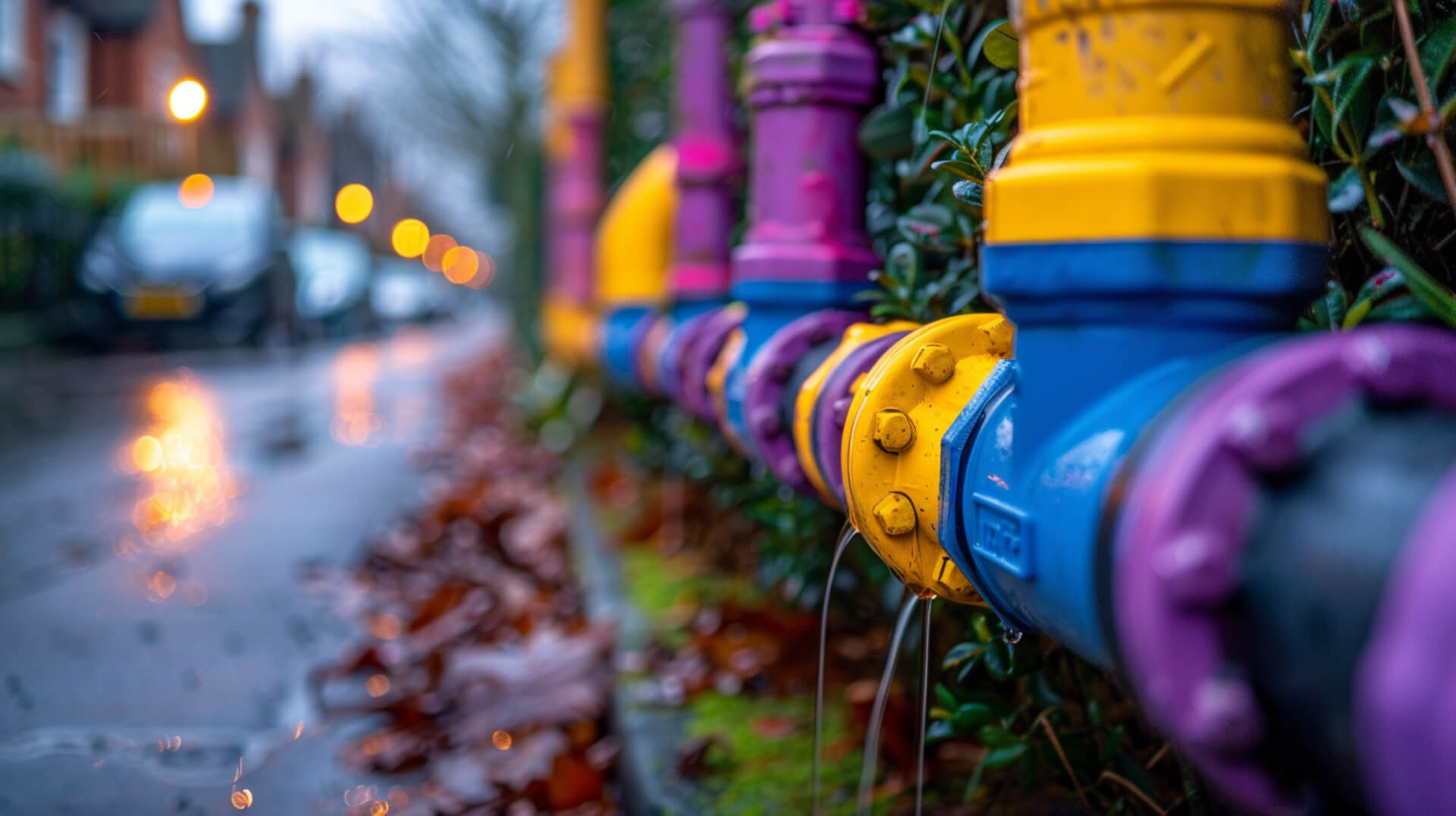
Drain dye testing is a diagnostic tool used to identify and locate leaks within a plumbing system. By introducing a non-toxic dye into the system and monitoring where the dye emerges, professionals can pinpoint issues that may not be visible during a standard inspection.
Revealing Leaks with Dye Testing
When dye testing is performed, the appearance of coloured dye in places where it should not be, such as on the ground surface or in a stormwater system, is a clear indicator of a leak. This method is particularly effective for detecting leaks that are hidden from view or are too small to be noticed without the aid of the dye.
Detecting Incorrect or Illegal Connections
Incorrect or illegal connections to the sewer system can be identified during dye testing if the dye appears in parts of the system where it should not. For example, if dye introduced into a sanitary sewer system is detected in a storm sewer, this suggests a cross-connection that could lead to environmental contamination.
Critical Nature of Leak and Connection Detection
Leaks and incorrect connections can lead to significant problems, including property damage, increased utility costs, and environmental harm. Detecting these issues early through dye testing allows for timely repairs, minimising potential damage and ensuring compliance with environmental regulations.
Common Leak Locations
In both residential and commercial properties, leaks are commonly found in areas with frequent water use, such as kitchens and bathrooms, or in ageing infrastructure where pipes may have deteriorated. Dye testing can be particularly useful in these areas to ensure the integrity of the plumbing system.
The Importance of Professional Dye Testing
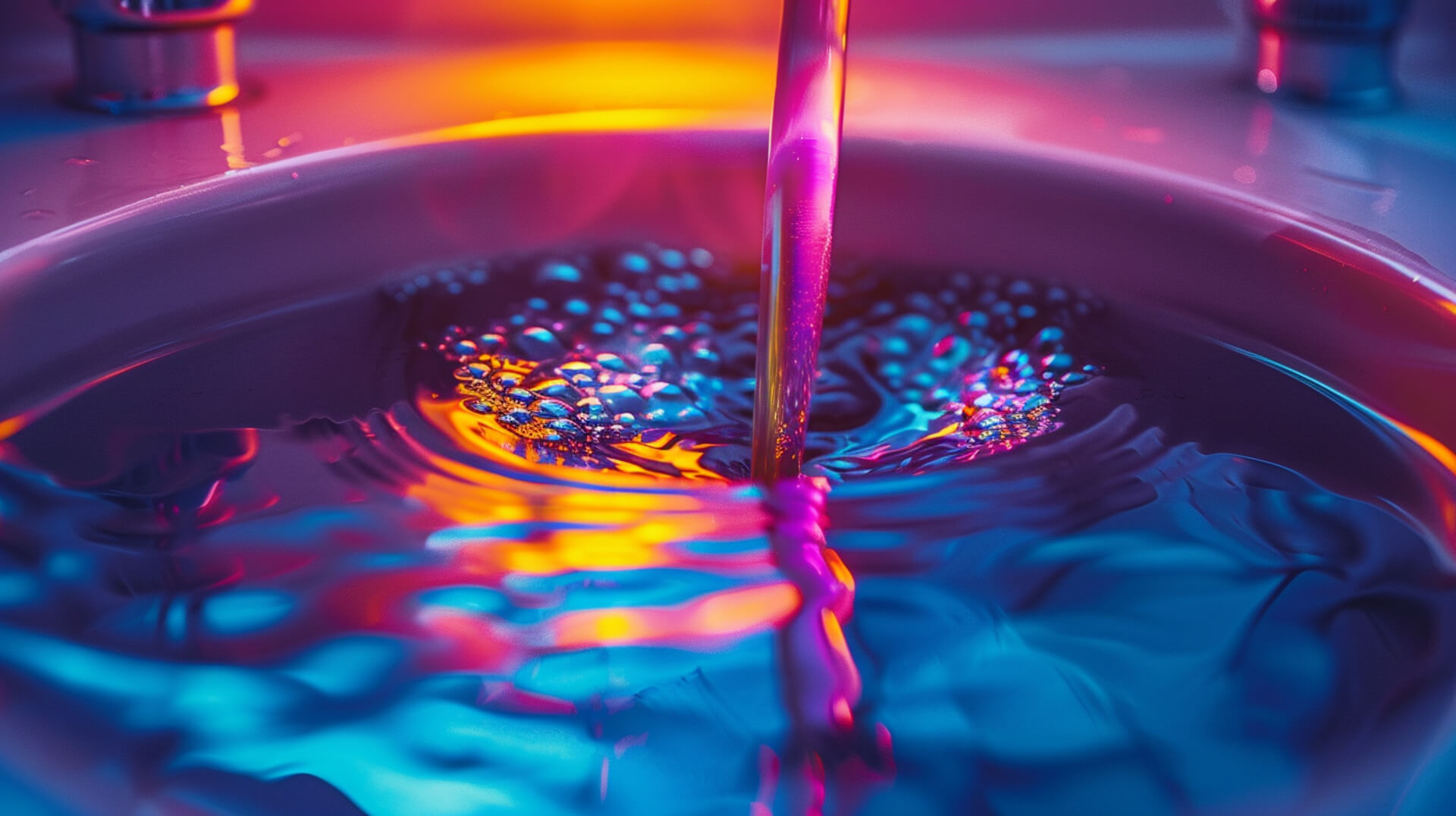
Dye testing is a specialised procedure that should be conducted by certified professionals to ensure accuracy and compliance with environmental regulations.
Professional Expertise in Dye Testing
Certified plumbers and environmental technicians possess the necessary expertise to conduct dye testing. Their training allows them to understand the complexities of various plumbing systems and to select the most appropriate dye and testing locations. This expertise is crucial for obtaining reliable results and for making informed decisions based on those results.
Optimal Location Selection
Professionals use their knowledge of plumbing systems and property layouts to determine the optimal locations for dye insertion. This strategic selection is vital for tracing the flow of water and identifying potential issues within the system.
Adherence to Testing Standards
During the dye testing procedure, professionals adhere to established standards and protocols. These standards ensure that the testing is safe, environmentally friendly, and in line with local regulations. The use of non-toxic, biodegradable dyes is a common practice to minimise environmental impact.
Scheduling Professional Dye Testing
The best time to schedule dye testing is during dry weather conditions to prevent dilution of the dye and to ensure that the test results are not influenced by external factors. Property owners should also consider their water usage patterns when scheduling a test to ensure that the dye movement accurately reflects the system’s typical flow.
Interpreting Dye Testing Results
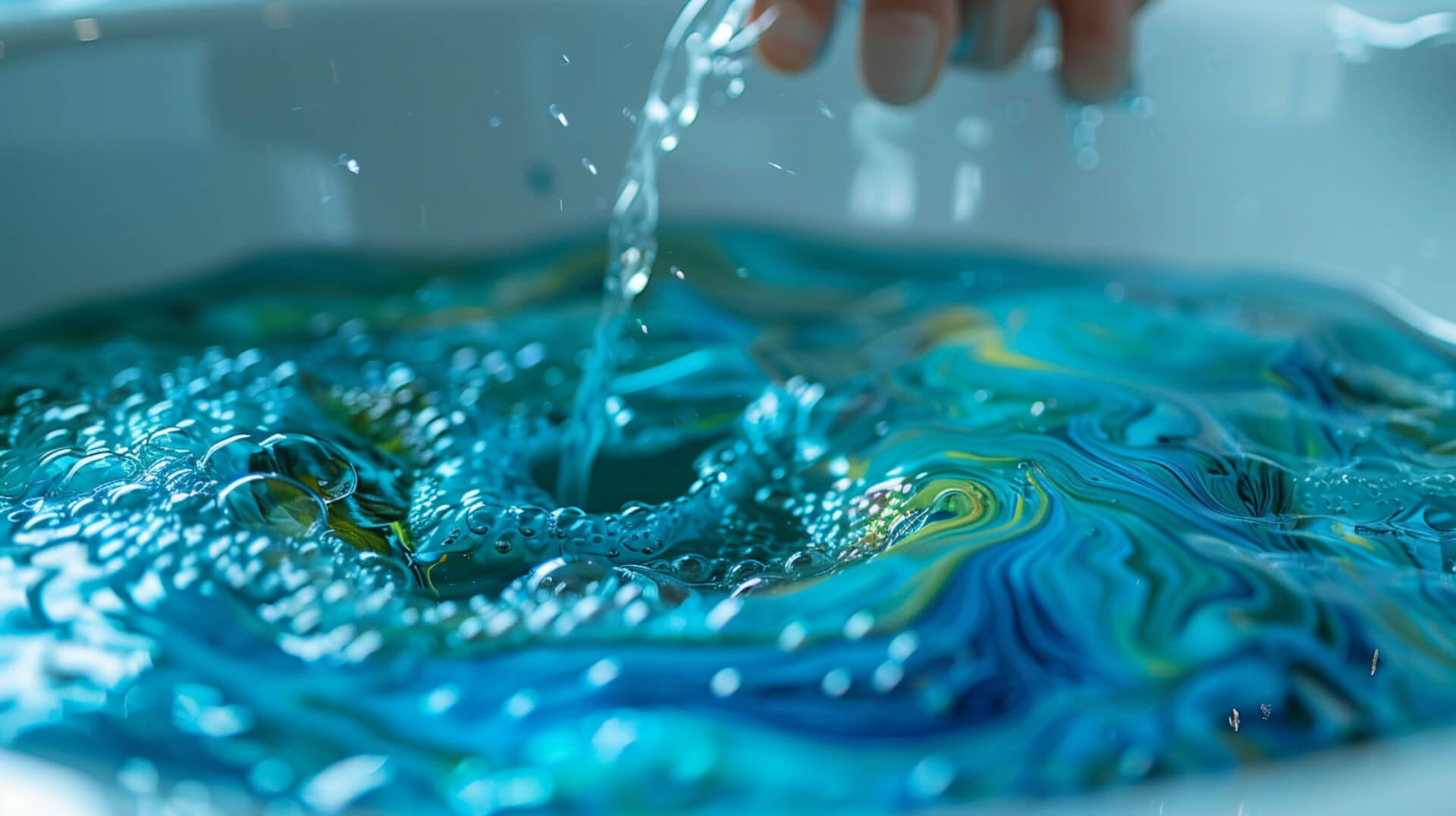
Understanding the outcomes of drain dye testing is crucial for property management. The results can reveal various issues within the plumbing system that require attention.
Decoding the Dye Test Outcomes
The interpretation of dye testing results is straightforward: if the dye appears where it should not, it typically indicates a problem. A successful test means no dye has been detected in the sanitary sewer system, suggesting that there are no leaks or misconnections.
Significance of Dye in the Sanitary Sewer
The presence of dye in the sanitary sewer can point to several issues. It may signal leaks, cracks in the pipes, or improper connections between the property’s plumbing and the municipal sewer system. Identifying these problems is vital to prevent potential environmental contamination and property damage.
Importance of Accurate Result Interpretation
Accurate interpretation of dye testing results is essential for taking the correct remedial actions. Misinterpretation could lead to unnecessary repairs or overlooked problems, resulting in further complications down the line.
Resources for Understanding Test Results
Property owners can find resources for interpreting dye testing results from local environmental agencies, plumbing professionals, or companies specialising in dye testing. These resources often provide detailed explanations of potential issues indicated by the presence of dye, guiding property owners through the next steps to resolve any detected problems.
Responding to a Failed Dye Test
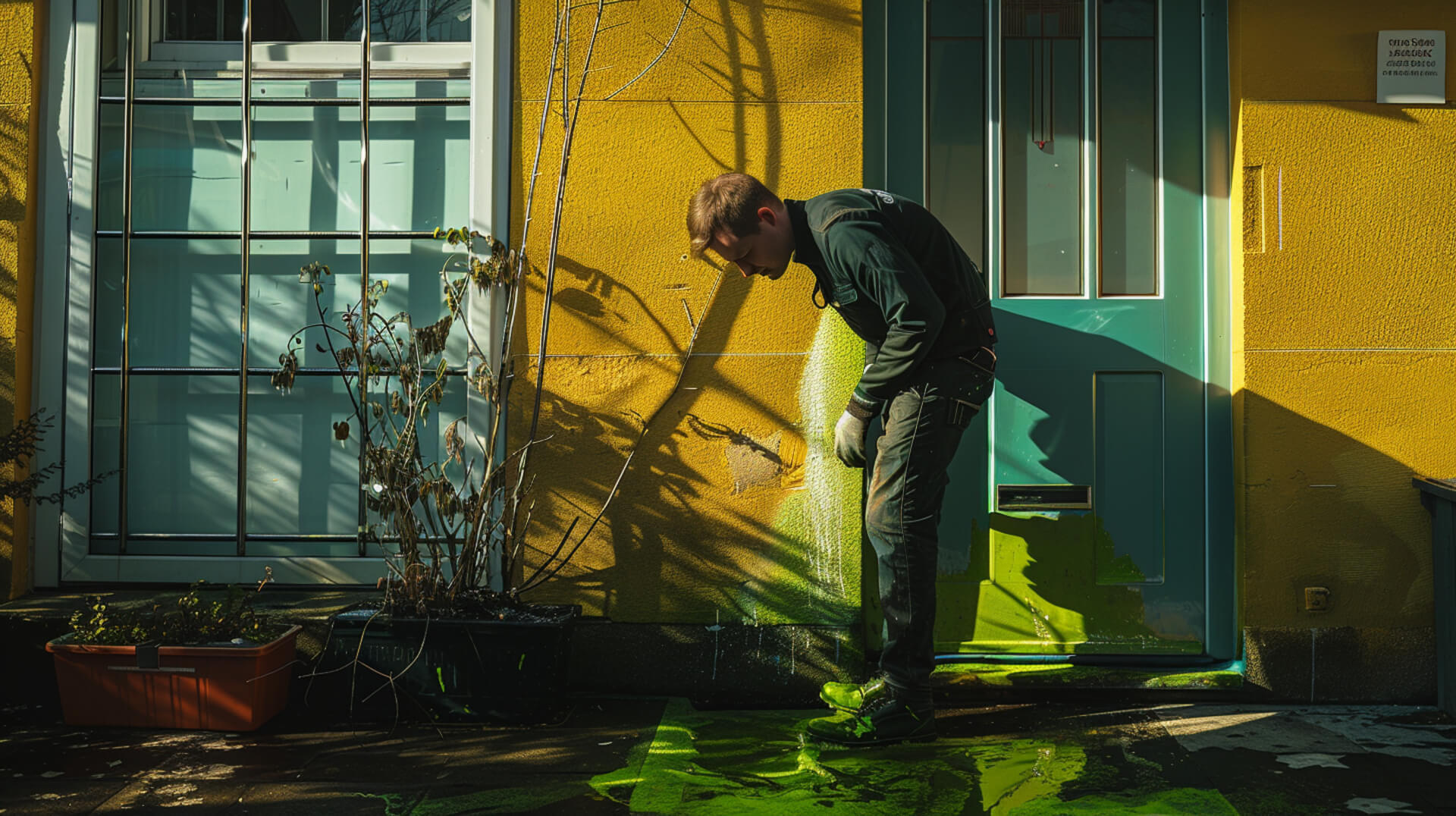
When a dye test does not pass, it indicates potential leaks or misconnections within the plumbing system. Understanding the appropriate steps to take following a failed test is essential for property management.
Immediate Actions Post-Failure
Upon receiving a failed dye test result, the first step is to conduct a calm and thorough assessment of the situation. Property owners should document where the dye has appeared and consult with a certified plumber to determine the cause of the leak or misconnection.
Importance of Professional Assessment
A professional assessment is crucial to accurately diagnose the issues revealed by the dye test. Certified plumbers can provide expertise in identifying the exact location and nature of the problem, ensuring that repairs are targeted and effective.
Retesting After Repairs
Once repairs have been completed, retesting the system is necessary to confirm that the issues have been resolved. This follow-up test ensures that no further leaks or misconnections remain and that the plumbing system is functioning correctly.
Obtaining Compliance Certificates
After a successful retest, property owners may need to obtain a compliance certificate from the appropriate local authority. This certificate serves as proof that the plumbing system meets regulatory standards and that any issues identified by the initial dye test have been addressed.
By following these steps, property owners can ensure that their plumbing systems are secure and compliant, maintaining the integrity of their property and the surrounding environment.
Types of Drain Testing Dyes and Their Applications

Drain testing dyes are an integral part of the dye testing process, used to detect and diagnose problems within plumbing systems. These dyes come in various forms and are selected based on the specific requirements of the testing procedure.
Varieties of Drain Testing Dyes
There are several types of dyes used in drain testing, each with unique properties:
- Liquid Dyes: These are often used for their ease of insertion into the system and their ability to spread quickly.
- Tablet Dyes: Convenient for their portability and controlled release, tablet dyes are a popular choice for smaller-scale tests.
- Fluorescent Dyes: These are particularly useful for their high visibility under UV light, making them suitable for detailed inspections.
Utilisation in Plumbing and Environmental Studies
Drain testing dyes are used not only in residential and commercial plumbing systems but also in environmental studies to trace water flow and detect contamination. Their application extends to:
- Leak detection in roofs and underground spaces.
- Verifying connections in sewer systems.
- Analysing water pathways in natural water sources.
Importance of Dye Selection
Choosing the correct type of dye is crucial for accurate testing. Factors such as water conditions, the material of the plumbing, and the environment where the dye will be used all influence the selection process.
Availability of Environmentally Friendly Dyes
Property owners can purchase environmentally friendly dyes from plumbing supply stores or specialised online retailers. These dyes are non-toxic, biodegradable, and designed to have minimal impact on the environment, aligning with the commitment to eco-friendly practices.
By selecting the appropriate dye and understanding its applications, property owners can effectively use drain testing to maintain the integrity of their plumbing systems and protect the environment.
Complementary Diagnostic Techniques to Dye Testing
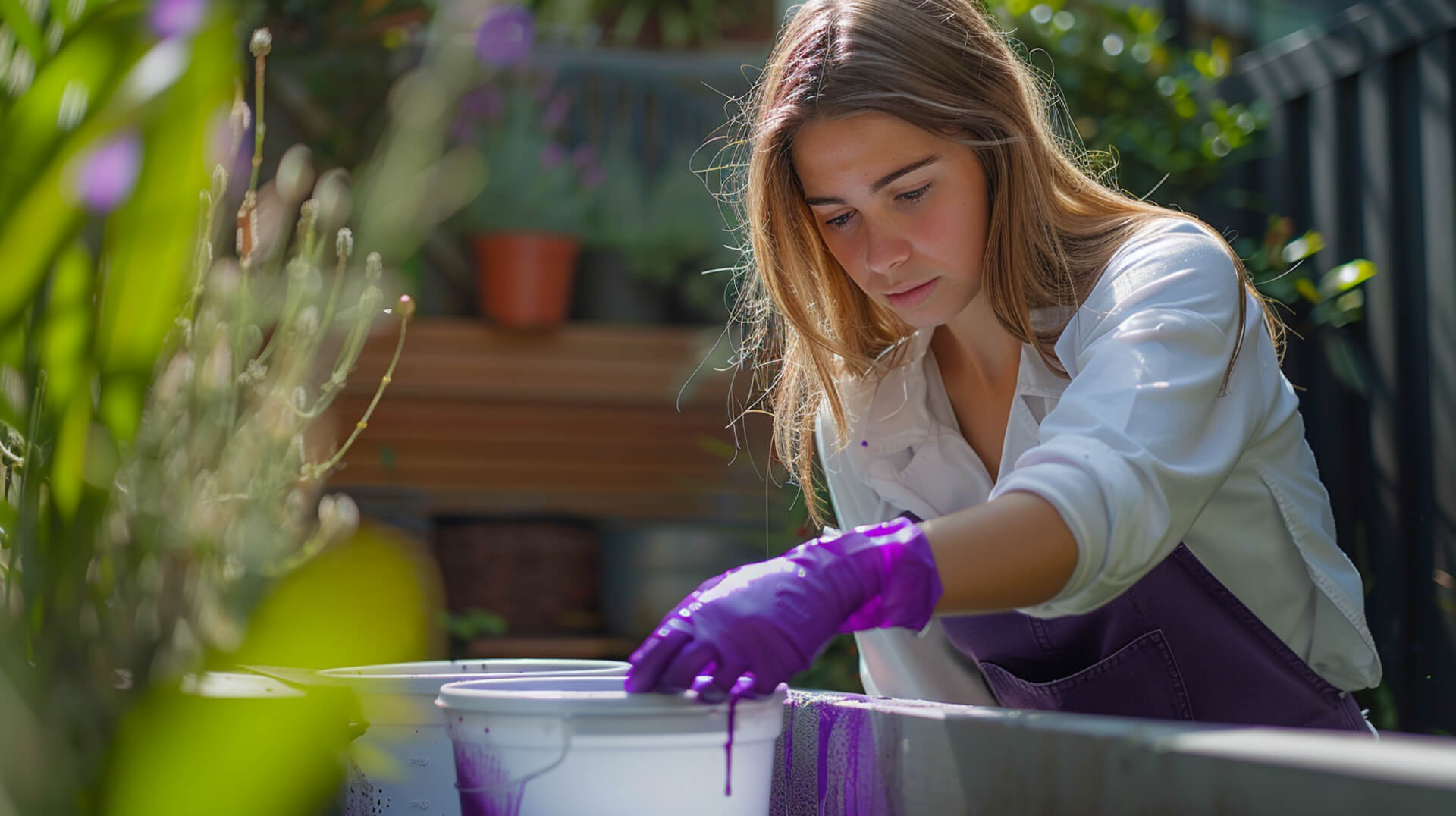
While dye testing is a valuable tool for detecting certain types of plumbing issues, it is often used in conjunction with other diagnostic methods to provide a comprehensive assessment of a property’s plumbing system.
Additional Diagnostic Methods
Several techniques complement dye testing, each serving a unique purpose in the diagnostic process:
- SONDE Tracing: This method involves sending a transmitter down the sewer line. The signal emitted by the SONDE can be traced from the surface, allowing for precise location of the pipes.
- Smoke Testing: By introducing smoke into the plumbing system, professionals can identify leaks as smoke escapes through cracks or faulty connections.
- Air and Water Testing: These tests apply pressure to the system to check for leaks. Air testing involves pressurising the system with air, while water testing fills the system with water and measures for pressure loss.
- Mandrel Testing: This is used to verify the integrity of the pipe’s shape, ensuring that no deformations are present which could impede flow or cause blockages.
Necessity of Multiple Diagnostic Approaches
Employing a variety of diagnostic methods is often necessary to identify all potential issues within a plumbing system. Each technique targets different types of problems, and together they provide a more complete picture of the system’s health.
Learning More About Diagnostic Techniques
Property owners interested in learning more about these complementary diagnostic techniques can consult with professional plumbing services or research resources provided by environmental agencies. These sources offer detailed information on how each method works and when they are most effectively applied.
Environmental Considerations in Dye Testing
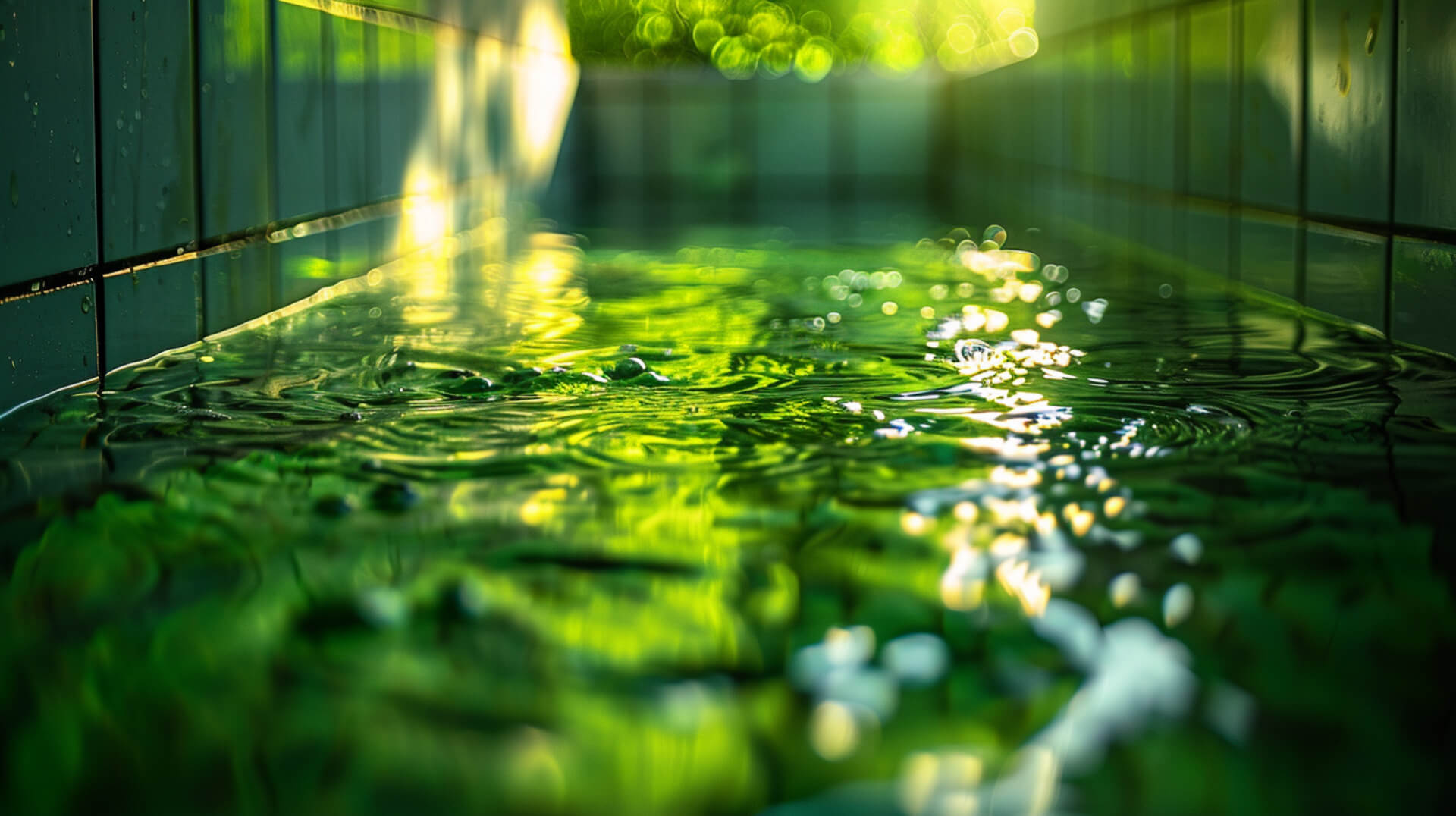
Drain dye testing is a procedure that must balance effectiveness with environmental responsibility. The dyes used are specifically chosen for their minimal impact on ecosystems.
Impact of Drain Testing Dyes on the Environment
The dyes utilised in drain testing are designed to be non-toxic and biodegradable, ensuring that they do not harm the environment. When introduced into a plumbing system, these dyes help identify issues without leaving a lasting footprint on the natural surroundings.
Ensuring Eco-Friendly Practices
To maintain eco-friendly practices, the dyes selected for testing meet stringent environmental safety standards. They are:
- Soluble and designed to break down quickly.
- Non-toxic to plant and animal life.
- Visible under UV light for easy detection without excessive use.
Collaboration with Environmental Authorities
Consultation with environmental authorities is recommended to ensure compliance with local regulations and to mitigate any potential environmental risks. These authorities can provide guidelines on the safe use of dyes and disposal methods post-testing.
Sourcing Biodegradable and Non-Toxic Dyes
Property owners can acquire environmentally safe dyes from reputable suppliers who specialise in plumbing and environmental testing products. These suppliers often provide dyes that are certified eco-friendly and safe for use in various water conditions.
By considering these environmental factors, property owners can conduct drain dye testing that is both effective in identifying plumbing issues and conscientious of the planet’s well-being.
Practical Tips for Effective Dye Testing

Proper preparation and execution of dye testing are critical for accurate detection of plumbing issues. Here are some best practices to ensure effective dye testing.
Preparing for Dye Testing
Before the arrival of a professional for dye testing, ensure access to all potential testing sites is clear. Familiarise yourself with your property’s plumbing layout, which can expedite the testing process. If available, provide the professional with plumbing diagrams or any previous inspection reports.
Coordinating Observation Efforts
During dye testing, simultaneous observation at different points of the system is essential. Coordination between the property owner and the professional can help in quickly identifying where the dye emerges, which is crucial for pinpointing the exact location of the problem.
Accessing Dye Testing Guides
For those interested in understanding the dye testing process in more detail, comprehensive guides are available through plumbing services, environmental agencies, and online resources. These guides offer step-by-step instructions and can be valuable for those who wish to be well-informed about the procedure.
By following these guidelines, property owners can facilitate a smooth dye testing session, leading to precise identification of any issues within the plumbing system.
Professional Services and Expertise in Dye Testing
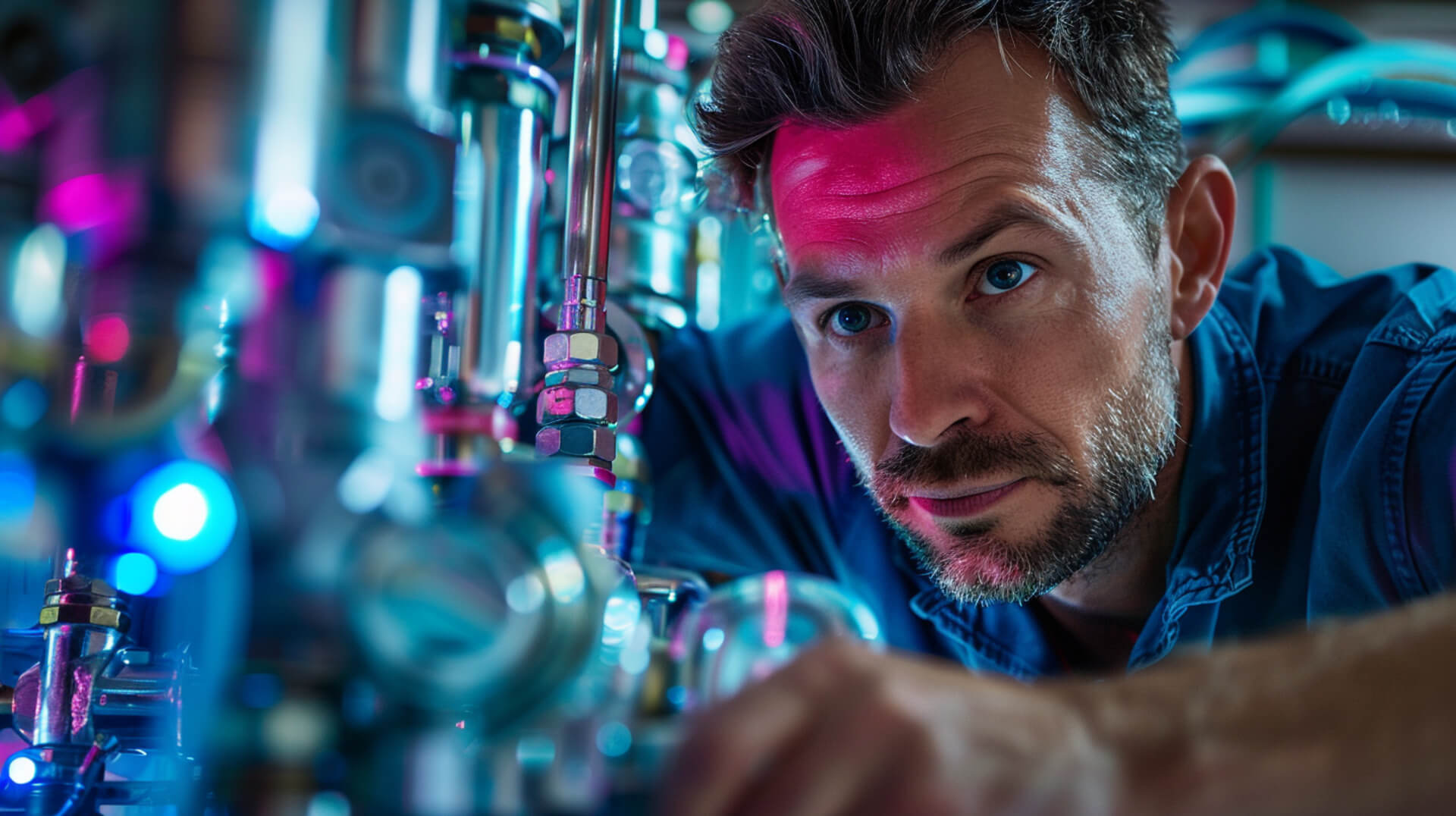
When it comes to dye testing, the expertise of professionals is indispensable. Certified plumbers and specialised companies bring a level of precision and compliance to the process that is critical for accurate diagnostics.
Selecting a Dye Testing Specialist
Professionals such as Mister Sewer Plumbing & HVAC, Metro Rod, and Abbey Drains are recognised for their proficiency in dye testing. These experts are equipped with the knowledge and tools necessary to conduct thorough inspections and to interpret the results accurately.
Ensuring Accurate and Compliant Testing
The specialists adhere to strict protocols to ensure that the dye testing is performed correctly and in compliance with environmental regulations. They use industry-standard dyes and follow best practices for inserting the dye, monitoring its flow, and documenting the findings.
The Necessity of Professional Expertise
Complex plumbing systems require a nuanced understanding that only experienced professionals can provide. Their expertise is crucial for identifying subtle issues that might otherwise go unnoticed, such as small leaks or illegal connections.
Locating Reputable Dye Testing Services
Property owners can find reputable dye testing services through local business directories, online reviews, or recommendations from municipal authorities. It is advisable to choose a service provider with a proven track record and the necessary certifications to conduct dye testing.
By engaging with professionals for dye testing, property owners ensure that their plumbing systems are evaluated with the highest standards of accuracy and compliance.
Key Insights from Drain Dye Testing
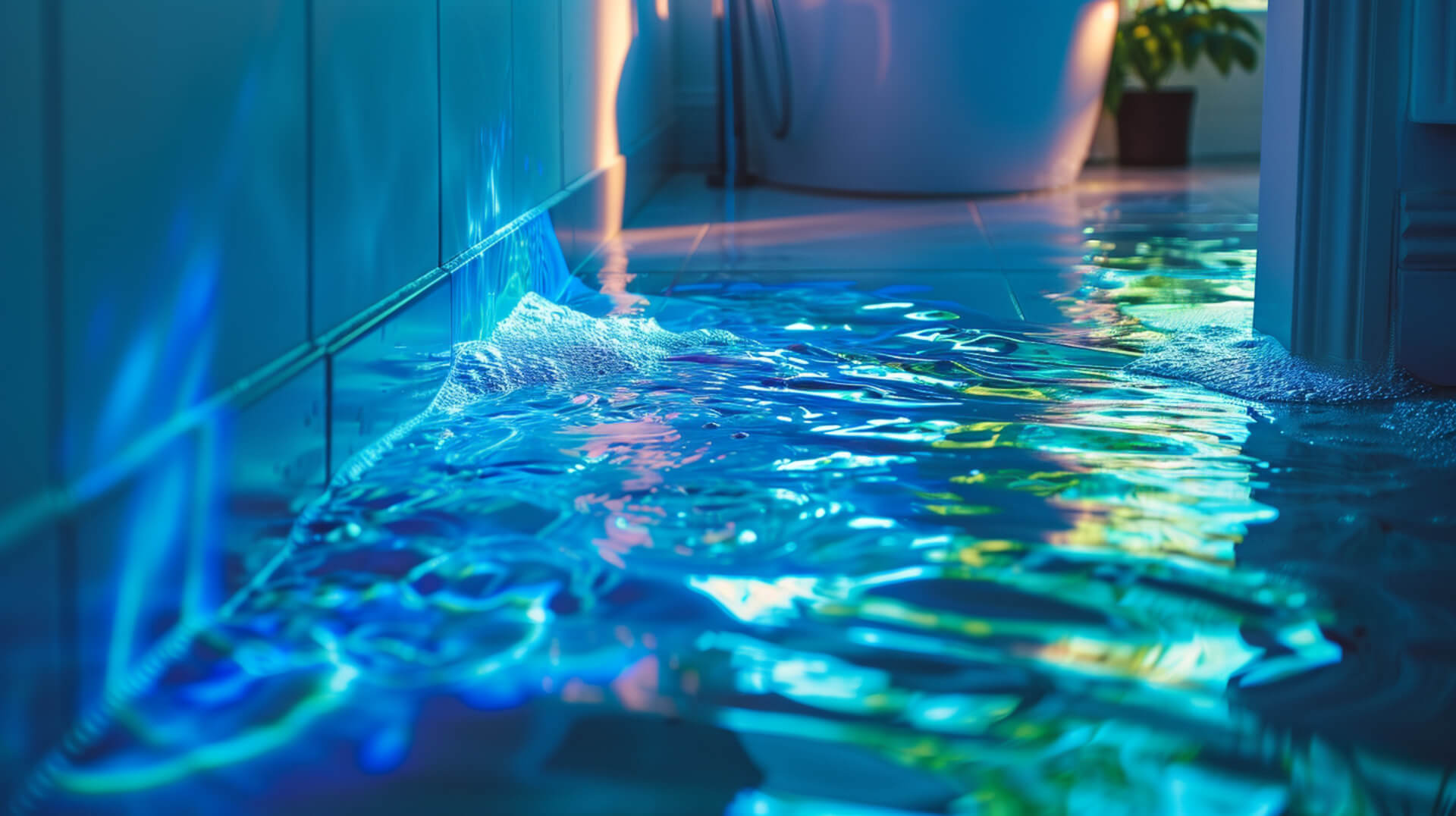
Drain dye testing serves as a critical diagnostic tool for property owners, business owners, and facility managers. It is designed to detect a range of issues within plumbing systems, from leaks to incorrect sewer connections.
Benefits of Dye Testing Knowledge
Understanding the capabilities of dye testing allows you to proactively manage your property’s plumbing health. Knowledge of potential plumbing issues can lead to early interventions, preventing costly repairs and environmental damage.
The Role of Regular Maintenance
Ongoing maintenance and regular dye testing are essential for preserving the integrity of plumbing systems. They help ensure that systems operate efficiently and remain compliant with environmental regulations.
Further Exploration of Dye Testing
For those seeking additional information on dye testing, resources are available through environmental agencies, professional plumbing services, and specialised online platforms. These resources provide in-depth guidance on dye testing procedures, environmental considerations, and best practices for maintaining plumbing systems.
By staying informed and utilising professional services for regular testing, you can ensure the longevity and reliability of your property’s plumbing infrastructure.
